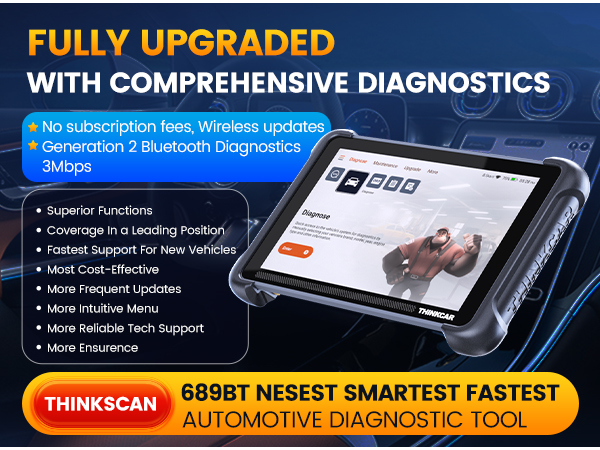Are you tired of spending hundreds of dollars on car diagnostics? Do you wish there was a way to diagnose your vehicle’s problems without shelling out a fortune to mechanics? Look no further than the bi-directional scan tool.
In this ultimate guide, we will take a deep dive into the world of bi-directional scan tools. From what they are to how they work, we will explore everything you need to know about this essential diagnostic tool for any car owner or mechanic.
What is a Bi-Directional Scan Tool?
A bi-directional scan tool is an electronic device that connects to your vehicle’s onboard computer system and runs a series of tests to identify any issues with your car. Unlike traditional OBD-II scanners that only read codes, bi-directional scan tools can send commands to your vehicle’s computer system and perform tests by activating different components in your car.
How Does a Bi-Directional Scan Tool Work?
Bi-directional scan tools work by connecting to your car’s OBD-II port and communicating with its onboard computer system. The tool sends commands through the OBD-II interface, which allows it to activate various components in the car, such as sensors, solenoids, and motors.
Once activated, these components will perform various functions, such as opening or closing valves or turning on and off lights. The bi-directional scan tool then reads the results of these actions and provides feedback on any problems detected.
Why is a Bi-Directional Scan Tool Important?
A bi-directional scan tool is essential for diagnosing complex problems in modern vehicles. With advanced electronic systems controlling almost every aspect of your car’s operation, traditional diagnostic tools may not be sufficient for identifying all issues.
Bi-directional scan tools offer an unparalleled level of insight into your car’s inner workings by allowing you to activate various components and monitor their performance. This level of detail can be crucial for identifying the root cause of a problem and ensuring that it is fixed correctly.
H2: Types of Bi-Directional Scan Tools
There are two main types of bi-directional scan tools: handheld and PC-based. Handheld devices are compact, portable, and easy to use. They typically have a small screen that displays diagnostic information and can be used to activate different components in your car.
PC-based bi-directional scan tools are more powerful and versatile than their handheld counterparts. They connect to your computer via USB or Bluetooth and allow you to run diagnostic tests using specialized software. PC-based bi-directional scan tools come with more features and can perform advanced diagnostics, making them ideal for professional mechanics.
H2: Benefits of Using a Bi-Directional Scan Tool
Using a bi-directional scan tool offers many benefits, including:
1. Accurate Diagnostics: Bi-directional scan tools provide detailed information about your car’s operation, allowing you to identify issues quickly and accurately.
2. Saves Time and Money: By diagnosing problems yourself, you can save time and money on expensive mechanic visits.
3. Easy to Use: Bi-directional scan tools are user-friendly, even for those without technical expertise.
4. Versatile: Bi-directional scan tools can diagnose a wide range of problems in modern vehicles, making them an essential tool for any car owner or mechanic.
5. Future-Proofing: As cars become more advanced, traditional OBD-II scanners may not be enough to diagnose complex issues. A bi-directional scan tool future-proofs your diagnostic capabilities by providing access to advanced diagnostic features.
H2: Features to Look For in a Bi-Directional Scan Tool
When choosing a bi-directional scan tool, there are several features that you should look for:
1. Compatibility: Ensure that the tool is compatible with your car’s make and model.
2. User-Friendly: Look for a tool with an intuitive interface that is easy to use.
3. Diagnostic Functions: Choose a tool with the diagnostic functions you need, such as sensor activation or component testing.
4. Software Updates: Ensure that the tool has regular software updates to keep up with advancements in vehicle technology.
5. Customer Support: Look for a tool with reliable customer support to help you troubleshoot any issues.
H2: How to Use a Bi-Directional Scan Tool
Using a bi-directional scan tool is relatively simple, but it does require some technical expertise. Here are the basic steps to follow:
1. Connect the tool to your car’s OBD-II port.
2. Turn on your car’s ignition and wait for the tool to establish a connection with your onboard computer system.
3. Select the diagnostic function you want to perform from the menu.
4. Follow the on-screen instructions to activate different components in your car and monitor their performance.
5. Interpret the results of the test and take appropriate action based on the information provided.
H2: Conclusion
A bi-directional scan tool is an essential diagnostic tool for any car owner or mechanic who wants to diagnose complex problems accurately and save time and money on expensive mechanic visits. With its advanced features and user-friendly interface, a bi-directional scan tool provides unparalleled insight into your car’s inner workings, making it an indispensable tool in any automotive toolkit.
Whether you’re a professional mechanic or a DIY enthusiast, investing in a bi-directional scan tool is an investment in your car’s health and longevity. So why wait? Get yours today and start diagnosing your car like a pro!
References:
1. https://en.wikipedia.org/wiki/On-board_diagnostics
2. https://www.obdautodoctor.com/scantool-garage/bi-directional-scan-tool
3. https://www.auteltech.com/what-is-bidirectional-scan-tool
4. https://mechanicbase.com/diagnostics/bi-directional-scan-tool/
5. https://www.tomorrowstechnician.com/the-benefits-of-a-bi-directional-scan-tool/




